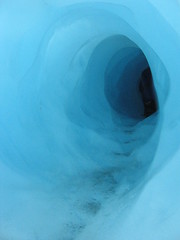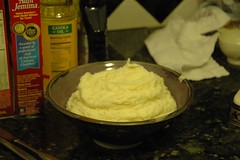Ice Facts

Here are some ice facts, in celebration of the weather we've been having, global warming not withstanding.
Ice is about 8% less dense than water. Ice floats.
When Ice melts, it absorbs as much heat as it would were an equivalent amount of water's temperature increased 80 degrees Celsius.
Ice is considered to be a mineral.
There are 11 types of crystalline ice, and 3 types of amorphous ice. Everyday snow and ice are Type I hexagonal ice. Cubic ice forms at temperatures between 130 and 150 Kelvin, and is stable to 200 degrees Kelvin.
Ice III, a tetragonal crystalline ice, is formed by cooling water down to 250 K at 300 MPa. Least dense of the high-pressure phases, it is denser than water.
Blue ice occurs when snow falls on a glacier, is compressed, and becomes part of a glacier that winds its way toward a body of water (river, lake, ocean, etc.). During its travels, all of the air bubbles that are trapped in the ice are squeezed out, and the size of the ice crystals increases, making it clear.
In 400 BC Iran, Persian engineers had already mastered the technique of storing ice in the middle of summer in the desert. In this way, the royalty was kept cool, and were provided with cold treats.
For more Ice Facts, check out the wikipedia, from which much of this was purloined.


0 Comments:
Post a Comment
<< Home